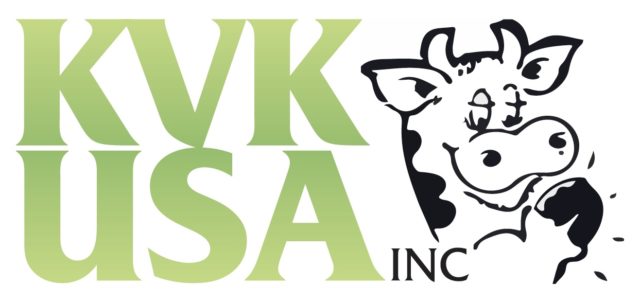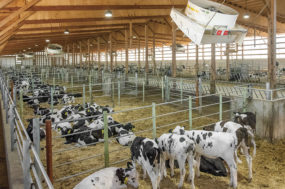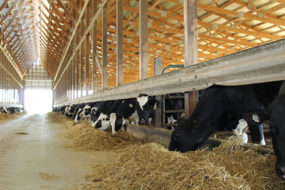Thinking about farm succession is a scary thing. On both sides of the fence, this is an intense and stressful process.
It is hard to imagine turning something over that you have worked so hard to build. I personally know how stressful it can be to come into an operation and try to fit in and improve it.
In July 2012, I bought half of the dairy cows from my parents, but that was just the beginning of our farm transfer plan. We have a lot of small steps to go through to get to the end of this process.
Although I am just in the beginning, I have learned a few things that are important to share with anyone thinking about starting a farm transfer plan.
When you are looking to do a generational transfer, there is no one-size-fits-all plan. This is the most important thing to remember: You cannot just go into your bank and expect to hammer this out in an hour. I would not expect a thorough plan to be done in even a week.
These things take time, and the plans are as unique as each dairy farm. Keep this in mind and don’t rush into a plan. Remember, your ideas will change weekly or even daily, and that is OK. It will take a lot of tries until you get a plan that will work for everyone involved, including the bank.
You need to figure out what everyone wants out of this. Does the older generation want to retire? Do they just want another investor so they can continue to expand and progress? Do they want to become a silent partner or investor?
What does the next generation coming in want out of the farm? Do they want to stay right where the farm is now? Do they want to progress and work hard now to have an enjoyable life later?
You need to make sure the goals of both sides can be combined in order to give everyone what they want, otherwise this will not work.
You need to make sure all of these goals are out in the open and you are working toward them, not short-changing one party. It is OK to realize that it is not going to work out and go your separate ways.
When doing a farm succession plan, we want to be fair to everyone. What I mean by this is: Both generations need to be treated in a way that is advantageous to them. For example, it is unfair of the older generation to tie the hands of the new generation.
By charging too much for buildings, land and equipment, you are putting the next generation in a corner. They will spend a great deal of their lives paying everything off and not growing and progressing with the times.
At the same time, I do not think a younger generation should just be given the farm for nothing or practically nothing. There is nothing wrong with them working for it, and the older generation needs to earn a retirement off the farm.
That is the point of it being sold to another person. We want a fair value put on all of these assets – not too high and not too low. By doing this, you are giving the older generation a retirement, but they are minimizing their taxes. At the same time, the next generation is building equity and able to grow and progress.
For the generation coming into ownership, this advice is for you. You need to prove you want it and each family has a different way of showing that. Maybe that is putting in the extra hours or taking the first step in getting a transfer plan together.
Either way, we don’t just get to walk into the lifestyle that our parents (or whomever you’re taking the farm over from) have now. I truly believe we need to work hard now to get even further. If you do so, you will earn the right to be in a place where you can enjoy your lifestyle.
You also need to know your numbers. I am not saying you need to know your entire balance sheet off the top of your head, but you need to know how much things cost. You need to be conscious of what areas you can save money in.
You need to be good enough with numbers that you can do a balance sheet as to whether a new idea, a new management practice or a new piece of equipment will pay for itself. Don’t forget that depreciation costs money, too.
Too many young people invest in equipment for the farm and do not figure in depreciation; that is a really important part of farm ownership and don’t ever forget that. Understanding basic math and finances will pay dividends in your future.
Do not be afraid of handouts when it comes to funding. No, I’m not saying go out and get on welfare. What I am saying is to think creatively about how you get money to fund your transfer; the bank is not always your only option.
Depending on what you’re looking to do, grants could be available or the Farm Service Agency has the Young Farmer and Rancher Loan. These are just two options that might be available to you. Do not be afraid to ask around and find out more information. These options might be a huge advantage in beginning your farm.
Open communication is the number one piece of advice I can give anyone looking to start this process. If you are not honest, no one will get what they want and everyone will be unhappy with the results. Don’t hold grudges with each other when they are simply being honest and open.
It is OK to walk away and be angry about it for a little while, but then get over it and drop it. My parents and I do that all the time and let me tell you, it’s not always easy but letting it go has to be a decision. Do not hold on to each other’s mistakes; it’s unfair and we all make them.
You have to move on and chalk it up to experience. By having open communication and letting things go, you can all be on the same page. Your working relationship will be so much smoother and better if you can do this.
The prospect of farm succession can be a very exciting yet scary journey. With open communication and some hard work, it can be a fun process, too.
The prospect of having a farm continue for another generation is something we all want to see. If you remember to use some forward thinking, you will have a smooth transfer where everyone benefits. PD

-
Ashley Messing-Kennedy
- Herdswoman
- Bad Axe, Michigan




